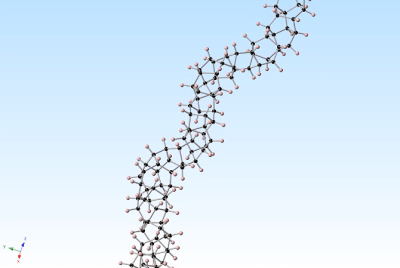When Will the Moon be Just the Push of a Button Away?

A recent discovery by a research team at Penn State University and the Carnegie Institution of Washington reminded us of the amazing, but still unrealized idea of constructing space elevators. A team of researchers discovered a new material and they say it may be used for anything – even for a space elevator.
This unbelievable discovery thrilled scientists around the world and assured them that they will finally be able to undertake space elevator construction. Until recently, building space elevators has been in the realm of science fiction. However, thanks to this discovery, it is slowly moving out of science fiction and into reality.
Nanotechnology breakthrough
John Badding, professor of Chemistry at Penn State University and Thomas Fitzgibbons, his student, announced they have discovered a way of making extra thick and strong diamond nanothreads. This material is stronger, thinner and stiffer than any other known fibers, including nanotubes and polymers.

A unique, ultra thin diamond nanothread structure (Credit: John Badding lab, Penn State Univeristy)
Professor Badding and Fitzgibbons used a specialized device which compressed benzene up to 200,000 atmospheres. This caused benzene to polymerize into carbon atoms which are arranged to form the fundamental unit of a diamond’s structure. The atoms are linked in all three dimensions and linked again to four carbon atoms, forming a tetrahedron.
This is an incredible discovery, given almost a century of failed attempts to create such a strong nanomaterial. Previous carbon nanotubes were too weak and they wouldn’t have been able to make a reliable elevator ribbon (cable). These diamond nanothreads are more than 20,000 times thinner than a human hair, but just a few centimeters long. So, the next step for researchers is to create nanothreads that will be longer and more practical.
The development of the idea
Who is the first person that created the concept of space elevators? Yuri N. Artsutanov, Russian engineer, is best known as one of the pioneers of the space elevator idea. He first discussed it in 1960 in his article “To the Cosmos by Electric train
Ivanovic J (2014-10-22 12:55:08). When Will the Moon be Just the Push of a Button Away?. Australian Science. Retrieved: Apr 25, 2024, from http://australianscience.com.au/technology/will-moon-just-push-button-away/
 Follow
Follow